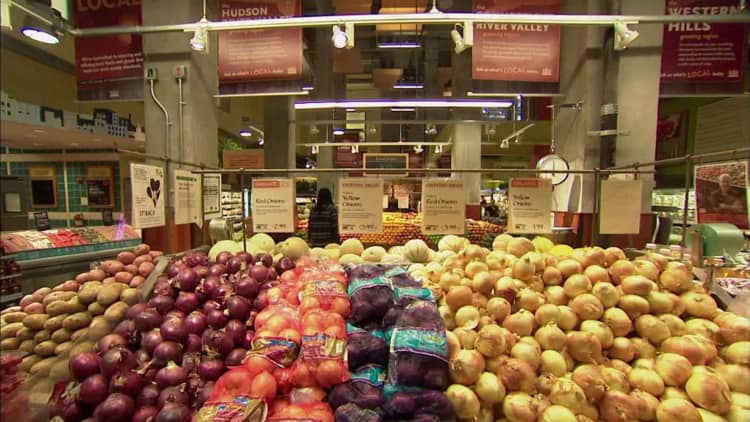
Despite its massive success, Prime hasn't been able to solve one nagging problem: its heavy concentration in high-income households.
But Amazon's decision to lower prices at could help draw more lower- and middle-income people to its Prime program because they may feel more compelled to check out the grocery store — and ultimately find out about the many benefits of the Prime program.
"Amazon's trying to cast as wide a net as possible," R.W. Baird analyst Colin Sebastian told CNBC. "They're going to try to make more store shoppers Prime members, and then bring more Prime members into stores."
Amazon Prime, which costs $99 a year, is estimated to have signed up more than 50 million U.S. households. But a big chunk of it comes from people in the higher-income bracket, a segment that is slowly getting saturated.
A recent survey by Piper Jaffray found that 82 percent of the households making $112,000 or more a year are already Prime members, while just 67 percent of the households with income in the range of $68,000 to $112,000 a year have signed up. Those making less than $68,000 hovered around 50 percent penetration.
On Thursday, Amazon said Prime members will receive additional savings and in-store benefits once Amazon and Whole Foods' technologies are fully integrated. Jeff Wilke, CEO of Amazon Worldwide Consumer, said in a statement that the discounts will make healthy and organic food affordable to "everyone."
'Whole Paycheck'
Brittain Ladd, a former Amazon Fresh employee who's now a consultant based in Seattle, said Whole Foods will have to cut prices by up to 25 percent to see a net increase in new customers. He believes Amazon will eventually launch new pricing tiers for Amazon Prime to make it more attractive to grocery shoppers and more affordable for lower- and middle-income families.
"Amazon is reducing prices at Whole Foods in an attempt to dispel the 'Whole Paycheck' image many people have of Whole Foods as well as to lure middle- and low-income consumers to consider Whole Foods as a place to shop," Ladd said.
Amazon has rolled out a number of initiatives over the past year to make Prime more affordable. For example, it started offering monthly memberships at $10.99 for those who find the $99 annual fee too expensive. It also introduced special offers for people receiving government assistance.
It's important for Amazon to grow its Prime membership base because Prime members tend to spend more and buy more frequently than nonmembers. Amazon CEO Jeff Bezos previously called Prime one of the three "pillars" of the company.
Still, don't expect it to make an immediate impact on Prime. Sebastian pointed out the discounts will have to be pretty steep in order to get enough new customers because lower-income consumers generally don't even think about shopping at Whole Foods. On top of that, Whole Foods owns less than 5 percent of the total market share, which means it's still too small to really drive Prime's growth.
"We'll see if prices are low enough to bring them into the stores," Sebastian said.
WATCH: 14 moments when a fast drone delivery from Whole Foods would save the day



